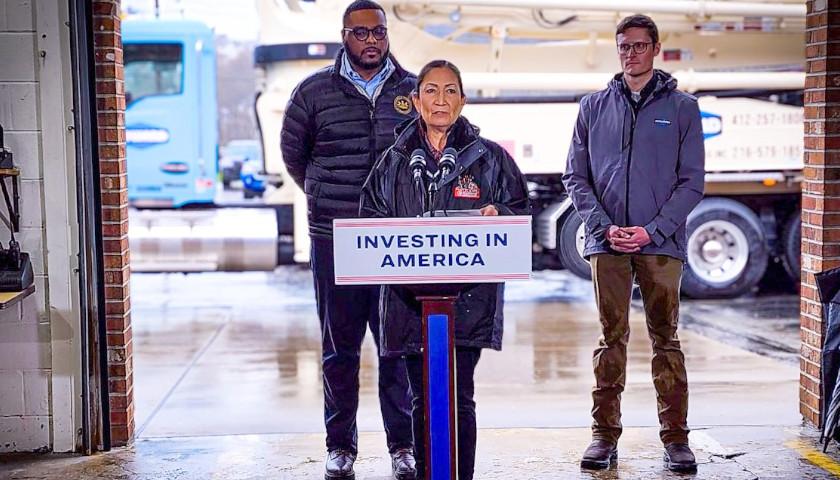The Tennessee Department of Education (TDOE) notified school districts of modifications in their federal financial allocations this past week. These annual adjustments are typically made earlier in the school year, giving districts time to recalculate local budgets. While districts should have been aware that changes were coming, the timing of this year’s adjustments arrived unexpectedly and created confusion.
Metro Nashville Public Schools (MNPS) spokesperson Sean Braisted told The Tennessee Star in an email, “We expected to receive our final allocation at some point in the fiscal year, so this is not unexpected. Our original allocation is a preliminary allocation, and the determination of a final allocation amount (and subsequent budget revision) happens annually.”
Due to the adjustment, most Tennessee school districts experienced a drop in their expected Title I funding – the federal allocation that is directed at supporting schools in the education of low-income students. In the case of Polk County, located in Southeastern Tennessee, that translated to a loss of $36,000 in federal funds without an explanation from the state. Bradley County suffered a similar blow.
However, both districts – and others – saw an increase in federal funds in other areas. In the case of Bradley County, the district received additional funds in Title II, which is utilized for professional development, and in special education. Other counties, including Metro Nashville Public Schools (MNPS), shared similar experiences.
MNPS lost $196,000 in Title I money, but saw an increase of $2,899,000 in IDEA part B funding, along with a $58,000 increase in IDEA Preschool and $290,000 in Title IIA. Part B revolves around funding that the federal government offers to states for special education of children with disabilities. The purpose of Title II is to provide supplemental activities that strengthen the quality and effectiveness of teachers, principals, and other school leaders.
Braisted said, “We don’t have a way to predict the amount of the adjustment, but the fact that a final allocation will be awarded at some point is known. TDOE communicates when the preliminary allocations are released that they are preliminary and those final allocations will be confirmed later.”
Title 1 funding came about as a provision of the Elementary and Secondary Education Act (ESEA) signed into law by President Lyndon B. Johnson. Funding under Title 1 targets schools and school districts where a high percentage of students are from low-income families. The purpose is to help schools establish programs to help these students – programs that wouldn’t be possible without some outside funding.
Federal funding programs are reimbursement based, so districts must spend the money and then submit for remuneration. Districts receive their projections in late Spring, and they begin spending their allocations down on July 1. Funds are typically used for the hiring of teachers, and specialists, decreasing class size and implementing programming designed to meet the specific needs of impoverished students.
Districts’ new federal numbers typically arrive in late August to mid-September, allowing adjustments to local budgets to be made early in the school year. With those adjustments coming this late in the year, districts are left scrambling to fill potential shortfalls. In some cases, allocations have been spent, and the shifting of budget resources required could leave some budget items at risk of being cut over a lack of funding.
This year’s adjustments were not only delivered late by the TDOE, but also with little warning or explanation. Districts received a terse email notifying them of changes, with no follow-up as districts scrambled for guidance.
Professional Educators of Tennessee (PET) executive director J.C Bowman said of the late announcement, “It wasn’t just poor planning or execution. It was horrible communication by the Department (TDOE). The Grinch didn’t just steal Christmas, he got Title I Money too!”
But TDOE spokesperson Brian Blackley defended the timing to The Star. “These allocations were provided to districts as soon as the department heard back from the federal government on the approach for Title I calculations,” he wrote in an email.
He attributed the delay to a 2021 federal audit on the department’s Title I calculation dating back to 2017 that found Tennessee out of compliance. That lack of compliance is credited to updated guidance by the federal government on how states calculate allocations of those funds to districts.
Earlier in the week, Blakely told Chattanooga’s Fox News, “TDOE has been working with the federal government to address the finding and are awaiting final approval from USEd for Title I calculations for the 2022-2023 year.”
Districts will now employ individual strategies to counter the change in funding. Braisted told The Star, “We’ll need to submit a Consolidated Funding Application budget revision in ePlan based on the final allocation to the TDOE in January so that the budgets in the CFA are balanced.”
The loss of funding is concerning for districts, but equally concerning is the lack of guidance and communication from the TDOE. State education policy experts express concerns that TDOE shortcomings put districts in a place where they are forced to be reactive as opposed to proactive, and policy implementation suffers as a result.
“The Tennessee Department of Education often gives the illusion that communication has taken place between themselves and stakeholders. It has not. Their communication failure is a much deeper issue, it is now an established culture within the Department of Education,” Bowman told The Star.
“State leaders show zero ability to listen and learn from educators, stakeholders, and school district leaders. The results of poor communication create a disconnect between policy, strategy, and eventually execution,” he added.
– – –
TC Weber is a reporter at The Tennessee Star and The Star News Network. He also writes the blog Dad Gone Wild. Follow TC on Twitter. Email tips to [email protected]. He’s the proud parent of two public school children and the spouse of a public school teacher.
Photo “Teacher and Students in a Classroom” by Thirdman.






“suffered a similar blow” ??? Only in liberal lefty Democrat funding and does a $3,051,000 increase in your funding equate something negative. It should be noted by the lemmings that support the failed education system that the increase appears to be earmarked for administration versus actual education. It will be interesting to see how quickly the battle cry will be for the State and Local taxes must be use to increase their already bloated budgets to fill their overflowing coffers.
Randy – I could not have said it any better. The cesspool called public education that squanders billions while providing no return on investment needs a complete overhaul.